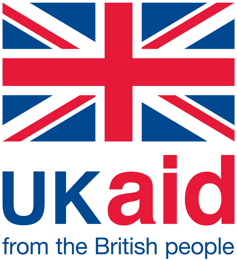About
The Rural Access Index (RAI) was developed by the World Bank in 2006, and is one of the most important global development indicators in the transport sector. The RAI is defined as the “proportion of the rural population who live within 2 km of an all-season road”.
The original 2006 methodology was based on household surveys. In 2016, the World Bank partnered with the Department for International Development (DFID) of the United Kingdom and the Research for Community Access Partnership (ReCAP) to develop a new methodology. The 2016 World Bank methodology took advantage of geospatial techniques and data collected using innovative technologies, and was designed to be sustainable, consistent, simple, and operationally relevant. The RAI was adopted as UN SDG Indicator 9.1.1. in 2016, and the World Bank is custodian of that indicator.
TRL under a separate ReCAP project in 2019 has developed Supplemental Guidelines to the World Bank methodology providing additional detailed guidance for calculation of the RAI.
The Supplementary Guidelines developed by TRL are available at this link.
The goal of this proof of concept application is to demonstrate the potential opportunities and limitations for using open datasets to calculate the RAI score.
For three trial countries in the ReCAP programme (Nepal, Malawi, and Myanmar), country-specific datasets have been used that are regarded as more accurate than the current open datasets. These country-specific datasets have been used to generate RAI scores that should better reflect the RAI scores for those countries. The resulting scores can be visualised on the map.
The three datasets used in the open data approach:
Summary of the methodology:
- Select commonly used tags from OpenStreetMap [Trunk, Primary, Secondary, Tertiary] that serve as an approximation for all-season roads
- Create a mask based on 2 km buffer on these roads
- Create a mask based on urban areas as defined by GRUMP urban extents polygons
- Summarise the population remaining on the 100 metre raster dataset from WorldPop 2019
Known limitations on the open datasets:
- OpenStreetMap is likely to be incomplete in most countries, and is unlikely to match official road agency mapping unless specific efforts have been made by the OSM community and/or roads agencies to reconcile the mapping
- GRUMP urban extents mapping was last updated in 1995
- No consideration is given to land cover types or terrain in the 2 km buffer
Data used for Malawi country analysis:
- Road Network Mapping was provided by the Malawi Roads Authority in March 2019.
- Urban/Rural boundaries were provided by the Malawi Department of Surveys in March 2019.
- Accessibility Factors were calculated based on data provided by District Engineers of the Malawi Roads Authority in September 2019.
- Population data is based on WorldPop 2019 projections derived from the Malawi 2008 national census reconciled at sub-national level.
Data used for Myanmar country analysis:
- Road Network mapping included data on the Department of Highways (DOH) network obtained from the Myanmar Information Unit geonode in September 2019; Department of Rural Road Development (DRRD) paved road data obtained from DRRD in September 2019; and Ministry of Border Affairs (MOBA) network also obtained from DRRD in September 2019.
Data used for Nepal country analysis:
- Road Network Mapping for the Strategic Road Network (SRN) was obtained from the Department of Roads in July 2019; blacktop and gravel roads in the District Core Road Network (DRCN) and Local Road Networks (LRM) were obtained from the Nepal Geonode in September 2019. Urban/Rural boundaries were based on the GRUMP database.
- Accessibility Factors were not used.
- Population data is based on WorldPop 2019 projections derived from 2011 Nepal population census and reconciled to World Population Prospects 2019 projections at sub-national level.
Potential uses:
- As a preliminary estimate of RAI to encourage national statistics offices and roads agencies to engage in calculation and publication of RAI / SDG 9.1.1 for their countries.
- As an estimate of absolute numbers of people (nationally, regionally and globally) who live further than 2 km from the nearest all-season road.
- As a planning tool to to help identify and prioritise areas of a country for rural development, linked with agricultural development plans, regional development plans and other considerations.
Disclaimer:
- The RAI Measurement Tool uses the "Admin O" border geometry provided by Natural Earth. ReCAP, TRL, Azavea and the World Bank take no responsibility for errors or inconsistencies in the depiction and use of country boundaries provided by Natural Earth and presented in the mapping tool.
The tool was last updated in December 2019 and is not being actively maintained. For further information contact info@azavea.com.


